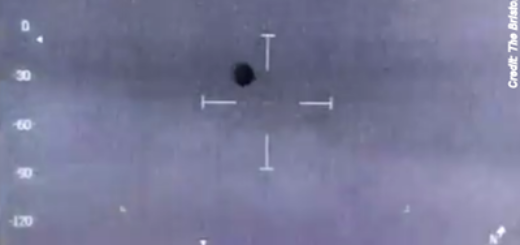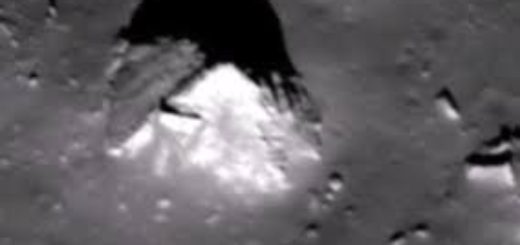Small, Alien Worlds Come in Two Flavors: Super-Earths and Mini-Neptunes

A new catalog of exoplanet discoveries by NASA’s Kepler space telescope has revealed two distinct size groups of small alien worlds, a finding that likely will have a huge impact on the search for extraterrestrial life.
“This is a major new division in the family tree of planets, analogous to discovering that mammals and lizards are distinct branches on the tree of life,” said professor of astronomy Andrew Howard, who works at the California Institute of Technology (Caltech) in a statement.
Kepler’s Catalog
During Kepler’s primary mission, it stared unblinkingly at the same patch of sky for four years (from 2009-2013), studying the brightness of more than 150,000 stars in the constellations of Cygnus and Lyra. Although the spacecraft is still taking data as part of the “K2” extended mission, this publicly available catalog marks the last release of Kepler’s primary mission.
Kepler detects exoplanets, or planets orbiting a star other than the sun, using the “transit method.” The method depends on alien worlds orbiting in front of their host stars. As the exoplanet blocks a tiny amount of light by passing in front of its star, Kepler detects the transit and can gauge the physical size of the world based on how much starlight it blocks. To rule out false positives like star spots or instrumental aberrations, the mission must detect many more transits around that specific star before the existence of an exoplanet can be confirmed. Until confirmation, these transits are known as “candidates,” and on June 19, NASA announced the detection of 219 candidate exoplanets, 10 of which are Earth-sized worlds orbiting within their stars’ habitable zones.
The habitable zone around any star is the distance at which a planet can orbit that’s neither too hot nor too cold for liquid water to exist on its rocky surface. As liquid water is necessary for life as we know it, the search for alien worlds that are approximately Earth-sized and orbiting within stars’ habitable zones is one of the most profound quests humanity has ever embarked on.
The Kepler tally now stands at 4,034 exoplanet candidates, of which 2,335 are confirmed exoplanets. More than 30 Earth-size habitable zone exoplanets have been confirmed to exist, and another 20 (including the Earth-sized candidates announced on June 19) await confirmation.
As Kepler’s catalog has grown, astronomers are using increasingly detailed statistical analyses to determine the different types of exoplanets that occupy our galaxy and, by teaming up with the W. M. Keck Observatory in Hawaii, a fascinating discovery has been made.
Frogs and Exoplanets
Exoplanets come in all sizes, from rocky worlds smaller than Earth to massive bloated gas giants many times the size of Jupiter. Within this assortment astronomers have discovered that, in the smaller exoplanetary demographic, our galaxy seems to favor either “super-Earths” or “mini-Neptunes,” with very few exoplanets in between.
“We’ve just discovered what we thought was a single type of planet is actually two distinct classes of planets with quite different properties,” said graduate student Benjamin “B. J.” Fulton, who also works at Caltech and Institute of Astronomy at the University of Hawaii, during the briefing.
Researchers have found that most planets discovered by Kepler so far fall into two distinct size classes: the rocky Earths and super-Earths, and the mini-Neptunes. This histogram shows the number of planets per 100 stars as a function of planet size relative to Earth.
Researchers have found that most planets discovered by Kepler so far fall into two distinct size classes: the rocky Earths and super-Earths, and the mini-Neptunes. This histogram shows the number of planets per 100 stars as a function of planet size relative to Earth.
NASA/AMES/CALTECH/UNIVERSITY OF HAWAII (B.J. FULTON)
This is analogous to biologists discovering a new species of frog in the Amazon rainforest, only to later discover that, after hundreds of specimens were collected and studied, this frog only comes in two sizes. The taxonomists may then decide that these two frogs are completely distinct species – a “regular” frog and a “dwarf” frog.
But before declaring the exoplanet “species,” the researchers needed to do some serious star scrutiny. So, during a five-year campaign, they used the Keck observatory to make extremely detailed observations of Kepler’s stars. They were able to precisely derive the physical size of the exoplanets by carefully measuring the size of their stars.
Lo and behold, they saw a pattern emerge, as detailed in a study published in The Astrophysical Journal. From the thousands of confirmed and candidate exoplanets, our galaxy seems to have a strong preference for two types of small exoplanets: Rocky worlds up to 1.75 times larger than Earth and gas-covered worlds between 2 to 3.5 times larger than Earth. These “species” of exoplanets are known as “super-Earths” and “mini-Neptunes,” respectively. Interestingly, there’s a gap between the two groups; exoplanets between 1.75 and 2 times the diameter of Earth appear to be rare.
“Most of the planets in the first group may be akin to the Earth, with rocky surfaces and little to no atmospheres. Planets in the second group are probably more like cousins of Neptune, with thick atmospheres and no surface to speak of,” Fulton added. “Intermediate size planets between these two size groups are relatively rare. This is a major new division in the family tree of exoplanets.”
But why would our galaxy preferentially produce two specific exoplanet groups? There are theories.
“A little bit of hydrogen and helium gas goes a very long way,” said Howard in a statement. “So, if a planet acquires only one percent of hydrogen and helium in mass, that’s enough to jump the gap [between the two groups to become a mini-Neptune]. These planets are like rocks with big balloons of gas around them. The hydrogen and helium that’s in the balloon doesn’t really contribute to the mass of the system as a whole, but it contributes to the volume in a tremendous way, making the planets a lot bigger in size.”
If other exoplanets are not able to retain their gaseous envelopes, however, they will quickly join the super-Earth category with little to no atmosphere.
“The atmospheres of planets orbiting close to their host stars are susceptible to being blowtorched away by the extreme radiation from the star,” said Fulton during the briefing.
This illustration highlights how our galaxy’s planetary factory might operate. Gravity, gas, mass and heat all play key roles in whether that planet turns out to be a mini-Neptune or a super-Earth.
This illustration highlights how our galaxy’s planetary factory might operate. Gravity, gas, mass and heat all play key roles in whether that planet turns out to be a mini-Neptune or a super-Earth.
NASA/KEPLER/CALTECH (R. HURT)
This, of course, has implications for the search for extraterrestrial life. By “sharpening up the dividing line” between these two groups of small exoplanets, Fulton argues that in the future astronomers will be able to better select where to hunt for alien life on truly habitable “super-Earths” rather than the “mini-Neptunes” with crushing atmospheres that would be “inhospitable to life as we know it.”



 Creators of mankind
Creators of mankind Description of “Tall white aliens”
Description of “Tall white aliens” Where they came from?
Where they came from? About hostile civilizations
About hostile civilizations The war for the Earth
The war for the Earth “Tall white aliens” about eternal life
“Tall white aliens” about eternal life Video: “Nordic aliens”
Video: “Nordic aliens” Aliens
Aliens Alien encounters
Alien encounters The aliens base
The aliens base UFO
UFO Technology UFO
Technology UFO Underground civilization
Underground civilization Ancient alien artifacts
Ancient alien artifacts Military and UFO
Military and UFO Mysteries and hypotheses
Mysteries and hypotheses Scientific facts
Scientific facts


















